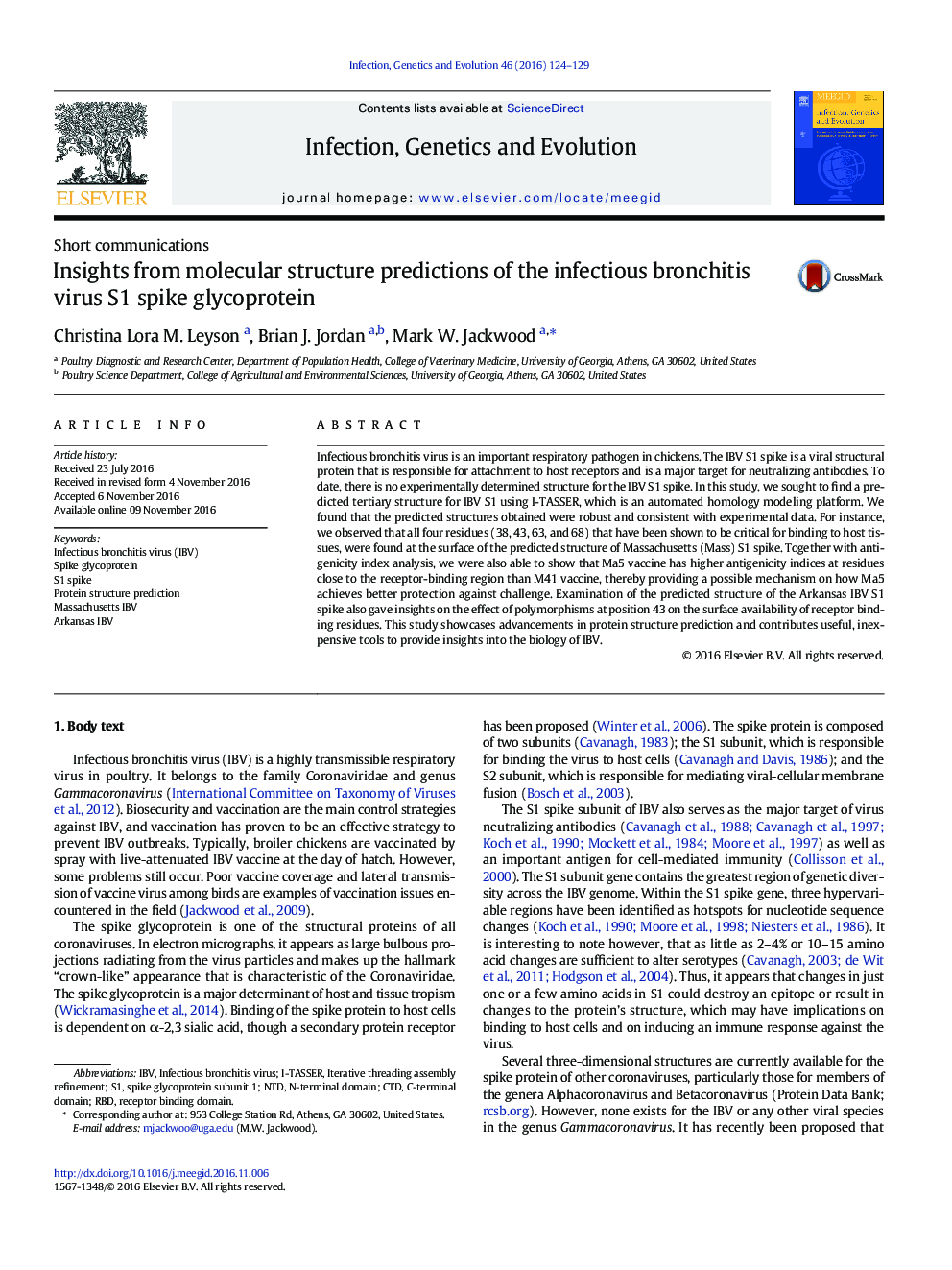| Article ID | Journal | Published Year | Pages | File Type |
|---|---|---|---|---|
| 5590703 | Infection, Genetics and Evolution | 2016 | 6 Pages |
Abstract
Infectious bronchitis virus is an important respiratory pathogen in chickens. The IBV S1 spike is a viral structural protein that is responsible for attachment to host receptors and is a major target for neutralizing antibodies. To date, there is no experimentally determined structure for the IBV S1 spike. In this study, we sought to find a predicted tertiary structure for IBV S1 using I-TASSER, which is an automated homology modeling platform. We found that the predicted structures obtained were robust and consistent with experimental data. For instance, we observed that all four residues (38, 43, 63, and 68) that have been shown to be critical for binding to host tissues, were found at the surface of the predicted structure of Massachusetts (Mass) S1 spike. Together with antigenicity index analysis, we were also able to show that Ma5 vaccine has higher antigenicity indices at residues close to the receptor-binding region than M41 vaccine, thereby providing a possible mechanism on how Ma5 achieves better protection against challenge. Examination of the predicted structure of the Arkansas IBV S1 spike also gave insights on the effect of polymorphisms at position 43 on the surface availability of receptor binding residues. This study showcases advancements in protein structure prediction and contributes useful, inexpensive tools to provide insights into the biology of IBV.
Keywords
Related Topics
Life Sciences
Agricultural and Biological Sciences
Ecology, Evolution, Behavior and Systematics
Authors
Christina Lora M. Leyson, Brian J. Jordan, Mark W. Jackwood,
